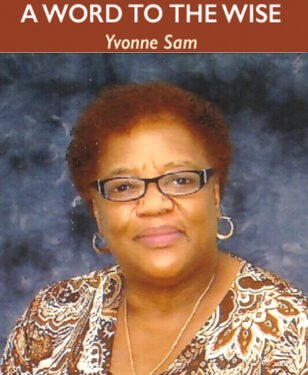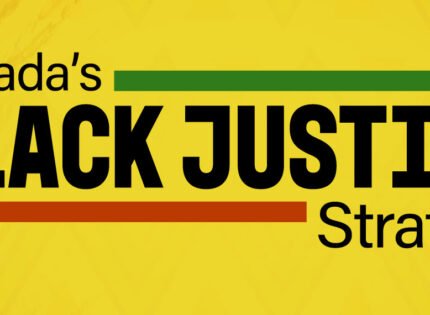 First, they came for the socialists, and I did not speak out—because I was not a
First, they came for the socialists, and I did not speak out—because I was not a
socialist. Then they came for the trade unionists, and I did not speak out—because I was not a trade unionist. Then they came for the Jews, and I did not speak out—because I was not a Jew. Then they came for me—and there was no one left to speak for me.
—Martin Niemöller.
Strange but true, there are some days when I grow weary of the constant strategizing, over-analyzing and self-negotiating associated with being Black. It has become what can only be termed a daily dance of mental gymnastics, compartmentalized emotions, and drive, all with the hope and desire to “uplift the race.”.
For years, the adage “when the U.S. sneezes Canada catches cold” has applied to the direction of the Canadian economy relative to the American economy, but it may very well soon apply to education and what is taught in classrooms.
Not wanting to be the harbinger of doom, but if it seems like there is something in the air… so, BE WARNED.
Already we see a chilling, inauspicious brashness of intolerance appears to be wafting through legislative bodies in Quebec, ready to spring into action.
Critical Race Theory is an academic concept that is more than 40 years old. Kimberlé Williams Crenshaw, a law professor at the U.C.L.A. School of Law and Columbia Law School is widely credited with coining the term.
The core idea is that race is a social construct, and that racism is not merely the product of individual bias or prejudice, but also something embedded in legal systems and policies.
It also suggests that historical patterns of racism are ingrained in law and other modern institutions, and that racism is a systemic problem, not only a matter of individual bigotry.
Critics charge that the theory leads to negative dynamics, such as a focus on group identity over universal, shared traits; divides people into “oppressed” and “oppressor” groups and promotes intolerance.
Additionally, there is a lot of confusion over CRT and its relationship to other terms, like “anti-racism” and “social justice,” with which it is often conflated.
Since January 2021, 44 states in the U.S have introduced bills or taken other steps that would restrict teaching CRT, or limit how teachers can discuss racism and sexism. Eighteen states have imposed these bans and restrictions either through legislation or other avenues.
Educators in states where such bills become law would be blocked from teaching about the racist roots of Western society, generally, and the United States, specifically, and how racism continues to plague the country.
CRT has converted school boards into battlegrounds and in higher education, the term has been tangled up in tenure battles.
Florida has passed a law that prevents Advanced Placement African American history from being offered in its high schools, stating that the course is not “historically accurate” and violates state law. (Rigorous A.P. courses allow high school students to obtain credit and advanced placement in college.)
History teachers cannot adequately teach about the tragic event referred to as the Trail of Tears, where in 1830 the United States government forcibly removed the southeastern Native Americans from their homelands and relocated them on lands in Indian Territory (present day Oklahoma), or The Civil War —–the culmination of the struggle between the advocates and opponents of slavery that dated from the founding of the United States.
Also, on the watch-list is teaching about the Civil Rights movement where nearly one hundred years after slavery was abolished, there was widespread segregation, discrimination, disenfranchisement and racially motivated violence that permeated all personal and structural aspects of life for Black people.
English teachers will have to avoid teaching almost any text by an African American author because many of them mention racism to various extents. Such laws and their consequences are just one manifestation of the increased scrutiny schools are facing in teaching about any issues that could be deemed controversial.
Although taking place in the U.S.A in order to gain some understanding as to why the theory has evoked the ire of many Republican legislators, some guidance can be sought from the late Brazilian philosopher Paulo Freire in his book PEDAGOGY OF THE OPPRESSED (1993) “Conditioned by the experience of oppressing others, any situation other than their former seems to them like oppression. Formerly, they could eat, dress, wear shoes, be educated, travel, and hear Beethoven, while millions did [none of those things]. Any restriction on this way of life, in the name of rights of the community, appears to the former oppressors as a profound violation of their individual rights.”
It is entirely plausible that the lawmakers passing these bills feel that any restriction to, or challenge of teaching and learning from a Eurocentric lens is a profound violation of their rights specifically because they are white. This explains why so many white people impose the claim of reverse racism on CRT.
As mentioned before, when America sneezes, Canada catches the cold, so very soon in Canada, although not taught in schools, CRT tenets will be coming to educational ministries, boardrooms, and classrooms. And it can easily creep into discussions about non-palatable Black history.
Thanks to America you have been put on your guard.
However, when it comes to the discussion about CRT and teaching Black history in schools, white voices tend to resonate loudly, hence Black parents should be ready to raise their voices even louder and be ready to lead the discussion about teaching true Black history.
Blacks need to “STAY WOKE”.
White America has put a spotlight on themselves, and that spotlight has in turn shown Blacks how much work there is still to be done to ensure that our story is told.
We have been put on notice that the battles regarding our history are far from over. We must ask ourselves, who will stand up when they come for us?
Aleuta continua—– The struggle continues.















